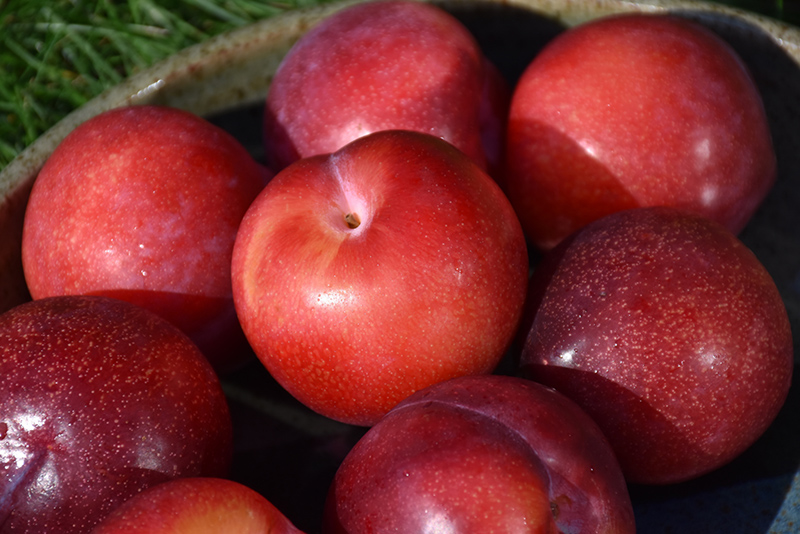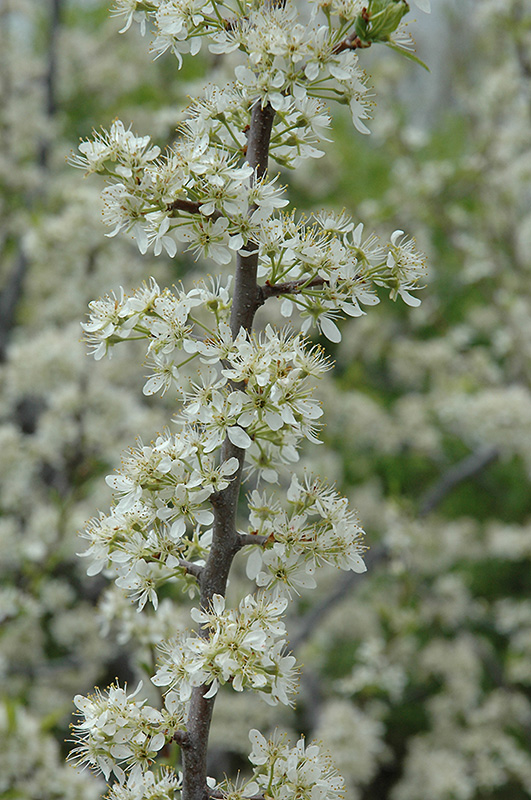Height: 20 feet
Spread: 20 feet
Sunlight:
![]()
Hardiness Zone: 4
Other Names: Japanese Plum
Description:
This variety bears large crimson red fruit with a sweet flavor; an upright spreading tree that is quite ornamental; needs full sun, well-drained soil; a pollenizer is not absolutely necessary, but fruit production will increase if there is one
Edible Qualities
Santa Rosa Plum is a small tree that is commonly grown for its edible qualities. It produces crimson round fruit (technically 'drupes') with yellow flesh which are usually ready for picking in late summer. Note that the fruits have hard inedible pits inside which must be removed before eating or processing. The fruits have a sweet taste and a juicy texture.
The fruit are most often used in the following ways:
- Fresh Eating
- Cooking
- Baking
- Preserves
Features & Attributes
Santa Rosa Plum is smothered in stunning clusters of fragrant white flowers along the branches in early spring before the leaves. It has forest green deciduous foliage. The pointy leaves turn yellow in fall. The fruits are showy crimson drupes carried in abundance in late summer. The fruit can be messy if allowed to drop on the lawn or walkways, and may require occasional clean-up.
This is a deciduous tree with an upright spreading habit of growth. Its average texture blends into the landscape, but can be balanced by one or two finer or coarser trees or shrubs for an effective composition. This plant will require occasional maintenance and upkeep, and is best pruned in late winter once the threat of extreme cold has passed. Gardeners should be aware of the following characteristic(s) that may warrant special consideration;
- Messy
Aside from its primary use as an edible, Santa Rosa Plum is sutiable for the following landscape applications;
- Accent
- Orchard/Edible Landscaping
Planting & Growing
Santa Rosa Plum will grow to be about 20 feet tall at maturity, with a spread of 20 feet. It has a low canopy with a typical clearance of 4 feet from the ground, and is suitable for planting under power lines. It grows at a medium rate, and under ideal conditions can be expected to live for 40 years or more. This variety requires a different selection of the same species growing nearby in order to set fruit.
This tree is typically grown in a designated area of the yard because of its mature size and spread. It should only be grown in full sunlight. It does best in average to evenly moist conditions, but will not tolerate standing water. It may require supplemental watering during periods of drought or extended heat. It is not particular as to soil type or pH. It is highly tolerant of urban pollution and will even thrive in inner city environments. Consider applying a thick mulch around the root zone in both summer and winter to conserve soil moisture and protect it in exposed locations or colder microclimates. This particular variety is an interspecific hybrid.


